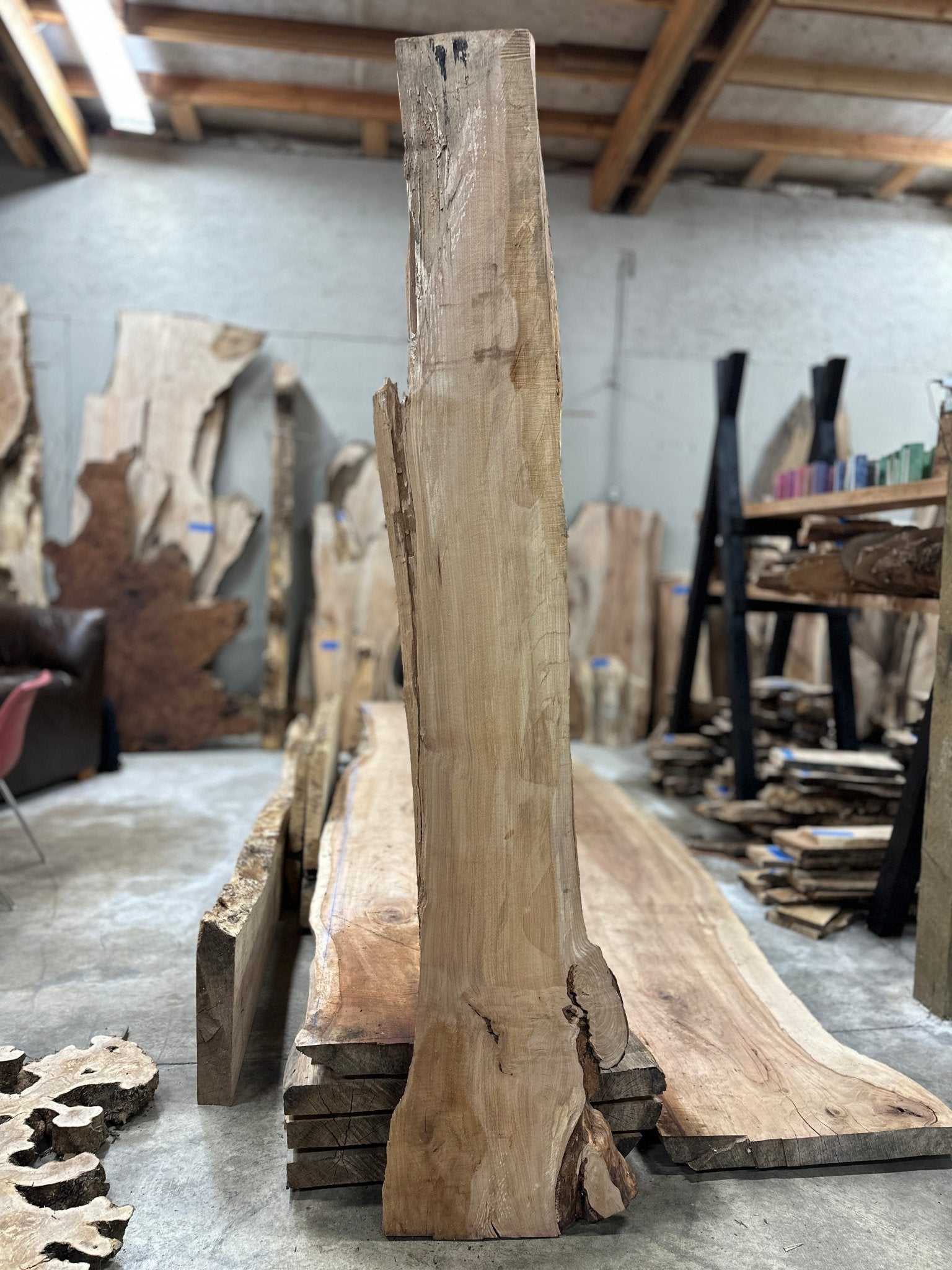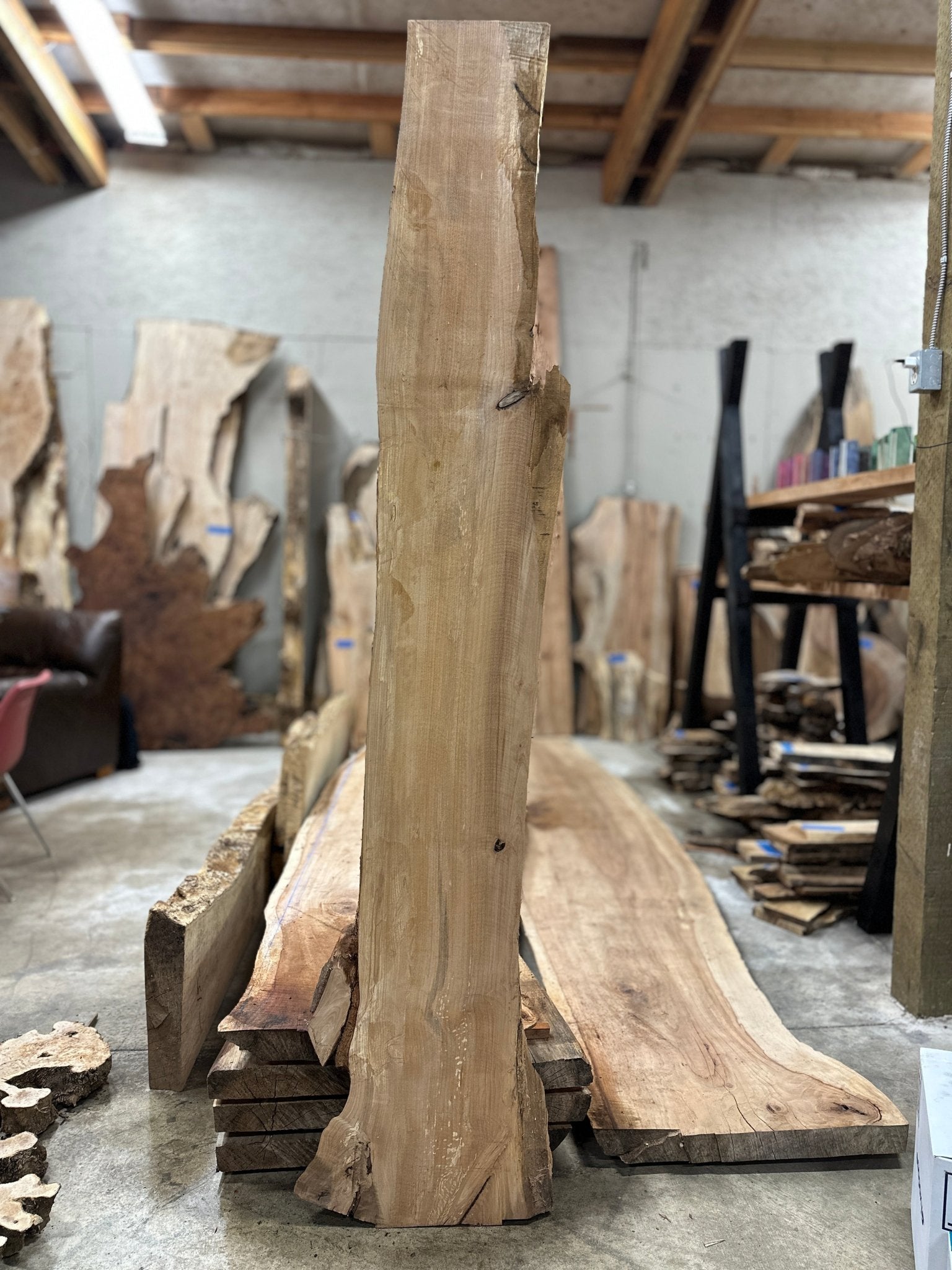LiveEdge Red Alder
Couldn't load pickup availability
Species: Red Alder
SKU: BGDDRA407
Length: 86"
Width (Bottom): 17"
Width (Middle): 12"
Width (Top): 9.5"
Thickness: 2"
Board Foot: 15.33 BDFT
Weight Estimate: 64 Pounds
Origin: Battleground, Washington
Shipping Information:
-Slab Ships From: Battle Ground, Washington
-All slabs are subject to freighted shipping. Once purchased, we will contact you via email or phone to coordinate and secure the best negotiated shipping rate for your location. Shipping costs are based on your zip code, residential/commercial address classification, and whether a liftgate/forklift is required.
If you can't find a slab that perfectly fits your needs among our listed options, feel free to reach out to us directly. We can check our inventory for additional slabs that may suit your preferences.
Contact Information:
-Email: info@hamiltonleesupply.com
-Phone: 360.601.8388
Transform your vision into reality with our remarkable Live Edge slabs. Embrace the artistry of nature in your next woodworking project and create a unique masterpiece for your home.
Crafted with precision and attention to detail, this kiln-dried slab is project-ready, ensuring minimal wood movement and cracking. Our state-of-the-art iDry vacuum kiln removes moisture, guaranteeing its suitability for your project right away.
Please note that as each tree is unique, no two slabs are alike. This individuality guarantees that your furniture piece, whether it's a table, shelf, or any other creation, will be truly one-of-a-kind.
At Hamilton Lee Supply, we are committed to preserving and reusing stunning wood materials. Our focus on sustainability means that every slab tells a story and contributes to a greener future.
Common Names: Red alder, western red alder
Scientific Name: Alnus rubra
Distribution: Found in coastal western North America
Tree Size: Typically reaches heights of 100130 feet (3040 meters) and trunk diameters of 23 feet (.61 meter)
Average Weight when Dried: Approximately 28.0 pounds per cubic foot (450 kilograms per cubic meter)
Specific Gravity (Basic, 12% Moisture Content): Ranges from 0.37 to 0.45
Janka Hardness: Measures 590 pounds of force (2,620 Newtons)
Modulus of Rupture: Exhibits 9,800 pounds per square inch (67.6 Megapascals)
Elastic Modulus: Approximately 1,380,000 pounds per square inch (9.52 Gigapascals)
Crushing Strength: Stands at 5,820 pounds per square inch (40.1 Megapascals)
Shrinkage: Radial: 4.4%, Tangential: 7.3%, Volumetric: 12.6%, T/R Ratio: 1.7
Color/Appearance: Red alder tends to be a light tan to reddishbrown, with its color darkening and reddening with age. There is no visible distinction between heartwood and sapwood. Large aggregate rays may appear as occasional small streaks on the face grain, which can be mistaken for defects in the wood.
Grain/Texture: Grain is generally straight, with a moderately fine, uniform texture.
Rot Resistance: Red alder is rated nondurable to perishable regarding decay resistance, and freshly cut logs should be quickly converted into lumber and dried to prevent staining or decay in the wood.
Workability: Red alder is very easy to work with both hand and machine tools and sands especially easily. The wood is rather soft, but care must be taken to avoid denting it in some applications. It turns, glues, and finishes well.
Odor: Lacks a characteristic odor.
Allergies/Toxicity: Although severe reactions are uncommon, alder in the Alnus genus has been reported to cause eye, skin, and respiratory irritation. Refer to Wood Allergies and Toxicity and Wood Dust Safety articles for more information.
Pricing/Availability: Red alder is usually available in two different grades: knotty and clear. Knotty red alder is typically inexpensive, similar to other domestic utility woods, while clear red alder is more expensive, closer to other domestic cabinet hardwoods.
Sustainability: This wood species is not listed in the CITES Appendices and is reported by the IUCN as being a species of least concern.
Common Uses: Red alder is used for veneer, plywood, furniture, cabinetry, millwork, pallets, musical instruments (electric guitar bodies), and chip/pulpwood.
Additional Comments: Red alder is the most abundant hardwood in the Pacific Northwest region of the United States and is commercially important for lumber. The wood has good stability with little movement once fully dried and is sometimes used as a lowercost alternative to black cherry (Prunus serotina). The defining characteristic of Alnus species is its large, very sporadically occurring aggregate rays, which may be mistaken for occasional defects in the wood on the face grain."







